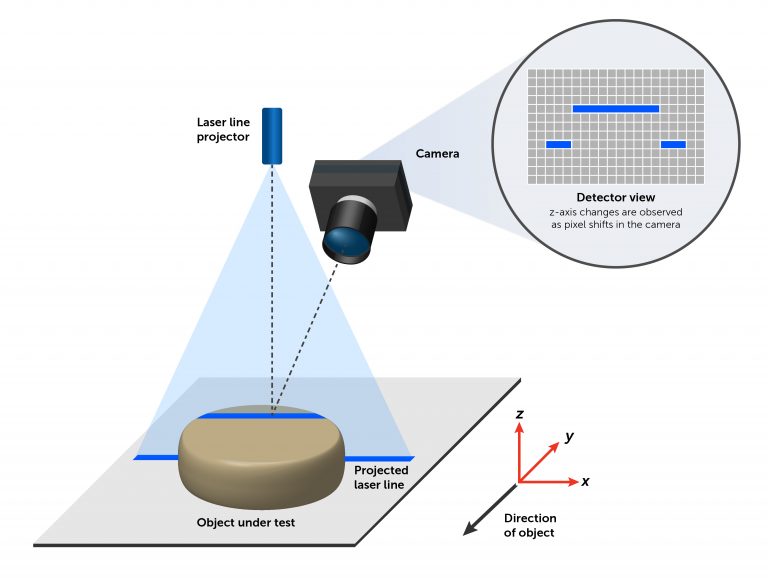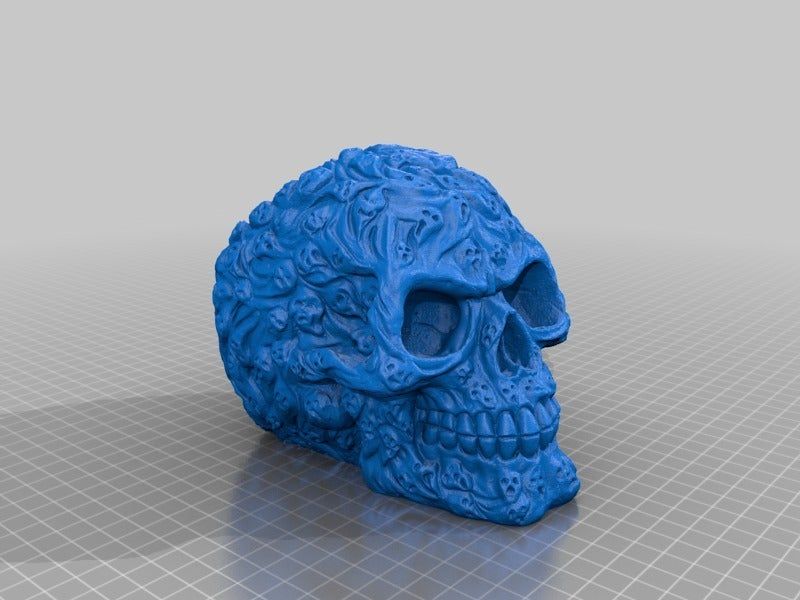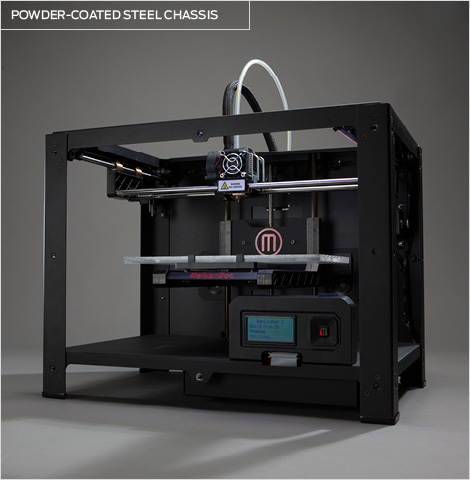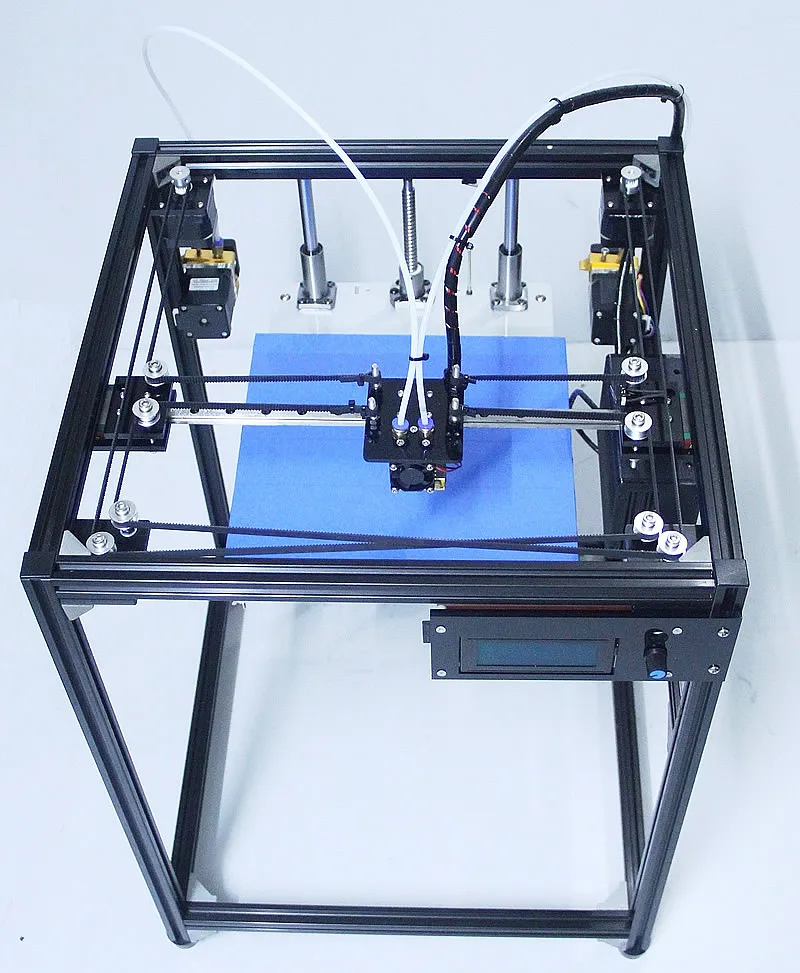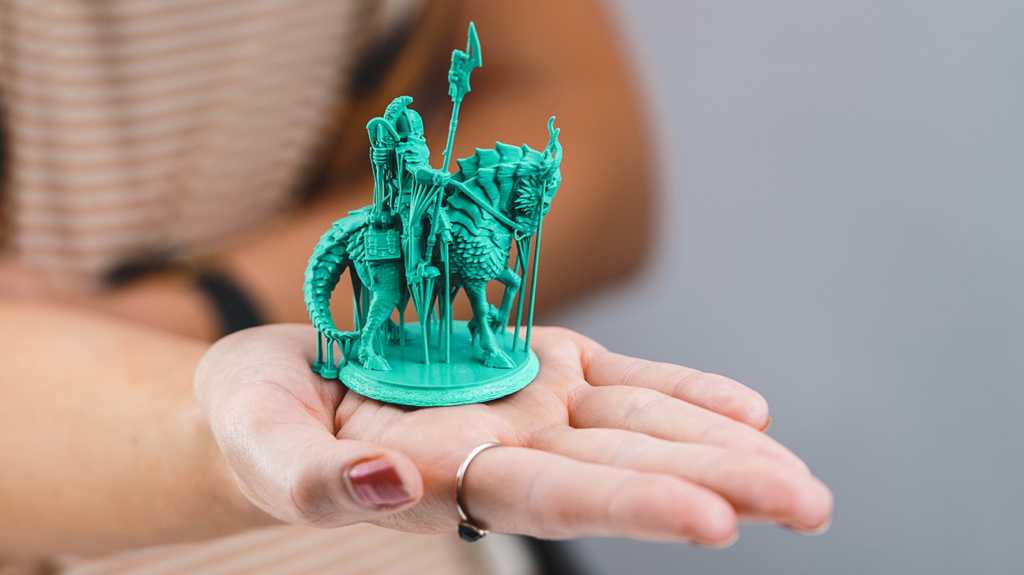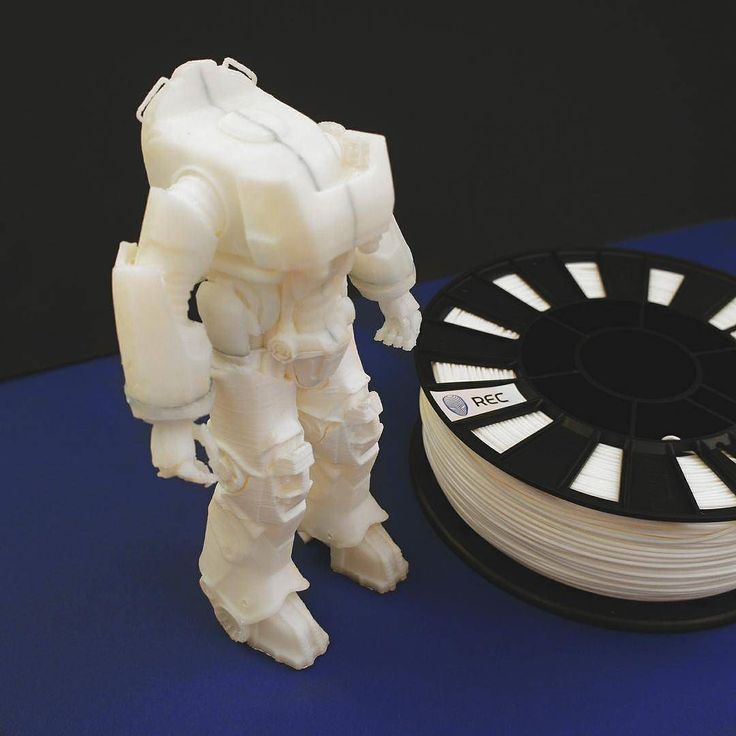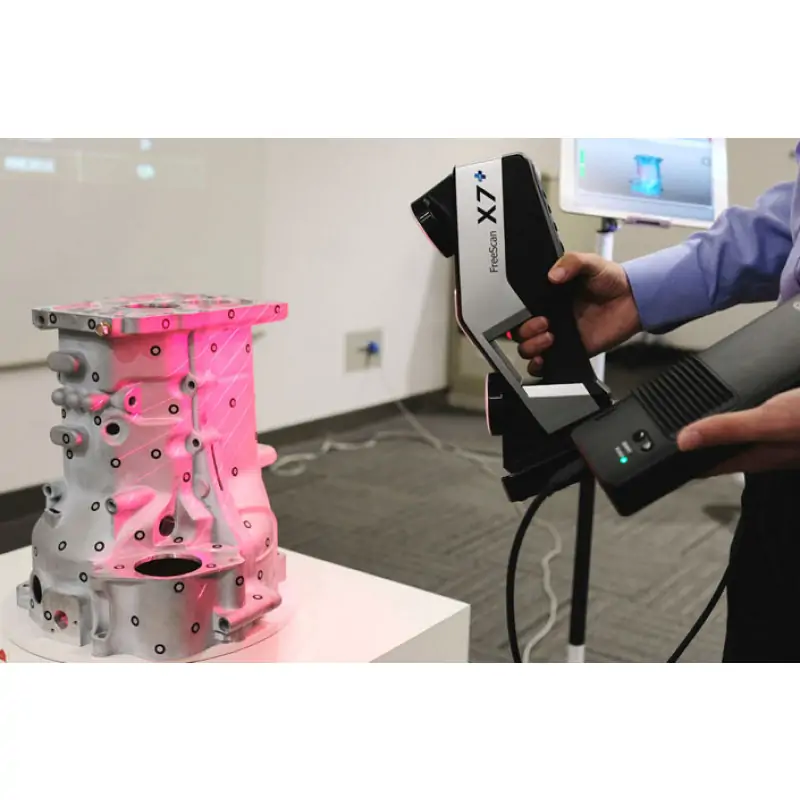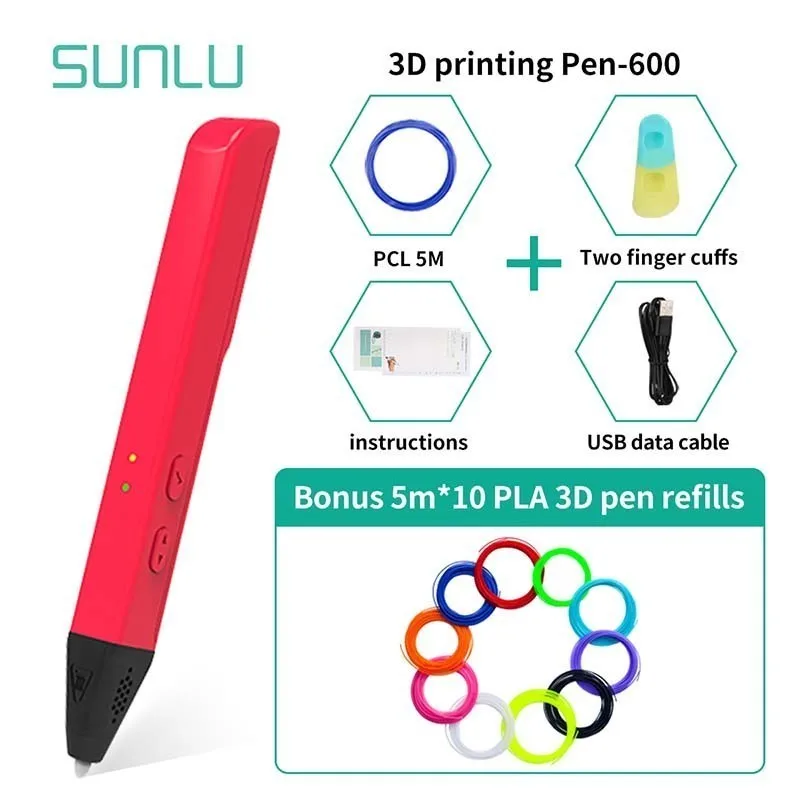3D laser profile scanner
Applications for 2D/3D laser scanners
Select applications by:
Metal
Wood
Plastics
Rubber
More
Profile
3D scan
Width
Height / Step
Gap
V-gap
Edge
Angle
Weld seam / glue bead
Groove
Surface
Position
Motor vehicles
Traffic (general)
Metal processing
Mechanical engineering
Consumer goods and housekeeping
Electrical engineering
Civil engineering
More
Linear 3D capturing of parts
3D surface scan for process control
Completely automatic 3D repair welding
Position of decorative stitching on airbags
Filling level of liquid aluminum
Strip stock control
3D – capturing of soil samples
Rotary recess depth on a braking disc
Papers sticking out of a book
Measurement of the chip thickness in cards
Defect detection on counter tops
Dents on a bottle‘s lid
Thickness measurement on foam material
Quality assurance for railway sleepers
Detection of defects on pipe fittings
Chamfers on copper rings
Control of catch springs
Detection of defects on pipe insulations
Height measurement on wine gums
Joining gaps between steel sheets
Dimension control of silicon bricks
Thickness measurement on glass elements
Joining gap at glued optical glasses
Position of the rubber grip on golf clubs
Rubber profile control
Control of the contour on timber floor board
Control of wooden plugs
Control of wooden planks on knotholes
Rectangularity of wooden balks
Control of springs on parquet planks
Edge tracking
Surface control of adhesive foils
Glue bead on a car rear window
Adhesive beads on geometry
Adhesive bead control on stove borderings
Adhesive bead measurement
Control of transparent glue beads
Outline measurement on pipe ends
Measurement of concentricity on joints
Defects on imitation lether covers
Control of layers in the tire production
Control of hole shapes and positions
Dimension accuracy
Dimension control on packaging tapes
Cutting of frayed strip stock
Position and thickness of layers on a roll
Measurements on gear wheels
Control of metal hinges
Welded seam control
Velvet control
Quality control on emblems
Surface evaluation on steel plates
Defects on the surface of parquet planks
Pin control
Coplanarity of connector pins
Position control on a lid‘s grip
Control of stampings on leather
Profile measurement on shingles
Projected gap between metal parts
Process control in the production of plastic cups
Sealing beads in vehicle interiors
Control of decorative strips
3D structure of surface coatings
Steel wheel profile measurement
Thread length of knurled screws
Control of gypsum plaster boards
Rectangularity of joined machine parts
Tire control
Roll measurement
3D – capturing of axially symmetrical parts
Control of saw teeth
Railway tracks
Position of a welding seam inside a pipe
Control of welding seams
Welding seam control on beverage tanks
Tracing and control of welded seams
Tracking of a welding seam on pipelines
Welding seam tracking
Size accuracy of sectional doors
Gap measurement on car bodies
Gap measurement
Gap measurement on wood
Gap measurement on brake disks
Distinguishing of brake disks
Gap measurement on chain saw swords
Gap measurement in vehicle interiors
Gap measurement on plastic profiles
Gap measurement on foam material
Gap measurement on USB socket
Detection of flash on injection molding parts
Measurement of forged steel wheel tires
Movement of a wire rope
Stamped parts control
Spindle control
Rolled-steel joist control
Control of residual glue
Roll control in the coating industry
Control of ovality defects on geared objects
Measurement of flat washers
Measurement of rubber profiles
Measurement of edges on foam material
Wear measurement on drilling heads
Volume control on a potato slice
Presence of rings
V-profile measurement
V-profile measurement
Measurements during heated tensile test
Positions at work piece holding device
Automated machinery winding fiber cable
Angle measurement on pin contacts
Angle measurements on gear wheels
Angle control on sheet metals
HEADQUARTER MICRO-EPSILON AMERICA
8120 Brownleigh Dr.
Raleigh, NC 27617
[email protected]
919 787 9707
919 787 9706
Laser Profiler | KEYENCE America
Perform 2D/3D measurement and inspection in line with the LJ-X8000 Series. Our most versatile lineup of laser profilers offers 3200 points/profile, making it easy to accurately measure any target shape or material from high-resolution images. The laser profile scanners are compatible with four different controller options, allowing users to select a setup that perfectly aligns system capability with any application requirements. The maximum laser linewidth reaches over 720mm (28"), and multiple can be paired together to scan even larger targets. Programming for these high-performance sensors is completed in three simple steps, making accurate in line 3D measurement accessible for users of any experience level.
Catalogs Price
Features
Improve Reliability with 4x More Resolution
Capturing the true shape of a target is critical for performing reliable inspections.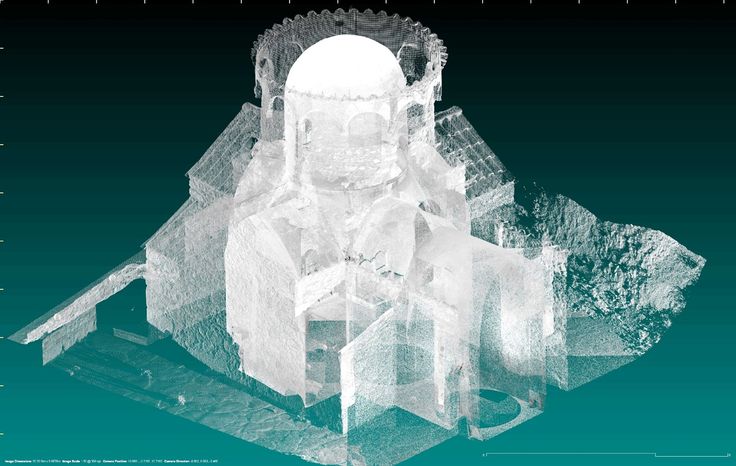 With 3200 points/profile, the LJ-X8000 Series captures target shape in high resolution, enabling accurate inline measurement.
With 3200 points/profile, the LJ-X8000 Series captures target shape in high resolution, enabling accurate inline measurement.
- Rough
- Irregular
- Surface dependent
- Detailed
- Consistent
- Stable on any surface
Maximizing resolution and target detection
To improve the resolution of the sensor, the number of pixels on the CMOS needs to be increased. This can be accomplished by making each pixel smaller; however, smaller pixels can result in insufficient light detection, causing an inaccurate profile on some targets. For the LJ-X8000 Series, we’ve implemented new technology to create a laser profiler capable of high-resolution measurement on any target.
Cylindrical lens
Parallel light is emitted using a cylindrical lens designed to prevent the reflected light from scattering across the surface of the target.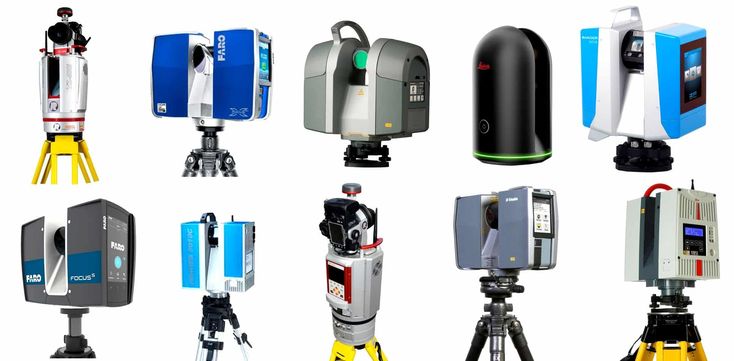 This ensures reliable reflections from any shape or surface.
This ensures reliable reflections from any shape or surface.
Large-aperture receiver lens
The sensor is equipped with a receiver lens that has 3x more area than conventional models, increasing the received light intensity. This allows the sensor to produce stable profiles in any environment.
High-resolution CMOS
This newly developed CMOS enables high-resolution measurement using 3200 points/profile, while delivering improved imaging capability on targets with varying reflectivity.
Profile Alignment Function
When creating a 3D image, the positions of each 2D profile are adjusted in the X, Z, and θ directions. This eliminates the impact of vibration and eccentricity as well as bends and curvature in the target, creating an optimal image for inspection.
Without profile alignment
Without profile alignment, the target image is distorted by vibration, making it impossible to perform accurate inspection.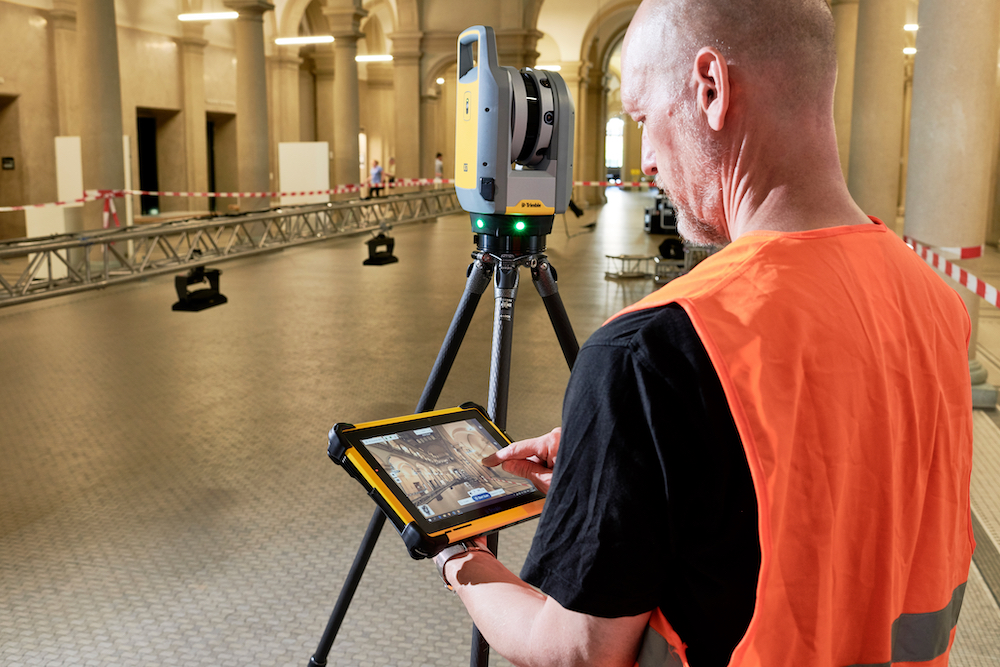
With profile alignment
Profile alignment allows for an optimal 3D image to be created. This achieves stable, inline inspections for dents, chips, and other defects.
Measure the profile and shape of targets using the high-speed 2D laser profilers of the LJ-V7000 Series. By collecting height data across the laser line, this system makes 100% inspection possible for targets that alternative systems struggle with due to lack of contrast or glare. The sensor's blue laser and specialized CMOS offers a wide dynamic range, enabling measurement of targets with multiple surface types or colors - ranging from glass and metal to dark rubber. The high-speed sampling (up to 64kHz) enables parts to be measured during transportation, improving production efficiency. The LJ-V7000 Series sensors are also compatible with the controllers of the LJ-X8000 Series to perform 3D measurement and inspection.
Catalogs Price
This first-generation laser scanner performs simple 2D measurements. The 2D displacement sensors of the LJ-G5000 Series can be used to measure height, height difference, width, and more. The laser line profiler automatically compares measurement values to dimension tolerances, enabling real-time detection of defective parts or processes. Up to 8 measurements can be performed simultaneously, supporting a wide range of inline profile measurement applications.
The 2D displacement sensors of the LJ-G5000 Series can be used to measure height, height difference, width, and more. The laser line profiler automatically compares measurement values to dimension tolerances, enabling real-time detection of defective parts or processes. Up to 8 measurements can be performed simultaneously, supporting a wide range of inline profile measurement applications.
Catalogs Price
Discontinued Series
-
2D Laser Displacement Sensor
LJ series
Discontinued
Laser profilers are laser displacement sensors that collect height data across a laser line rather than a single point. They measure the profile of an object using laser triangulation, a process where a band of light is emitted onto the target and the reflected light is received using a 2D CMOS to understand the height at numerous points across the line. Measurements such as height, height difference, width, and other measurements can be performed from this 2D profile without touching the target. By compiling profiles during a scan of a part, high-definition 3D representations of a target can be rendered to complete 3D measurements and inspection. The laser profiler's high-speed acquisition of high-resolution profiles enables reliable quality and process control solutions for a variety of applications and industries.
They measure the profile of an object using laser triangulation, a process where a band of light is emitted onto the target and the reflected light is received using a 2D CMOS to understand the height at numerous points across the line. Measurements such as height, height difference, width, and other measurements can be performed from this 2D profile without touching the target. By compiling profiles during a scan of a part, high-definition 3D representations of a target can be rendered to complete 3D measurements and inspection. The laser profiler's high-speed acquisition of high-resolution profiles enables reliable quality and process control solutions for a variety of applications and industries.
Laser profilers can perform non-contact profile measurements. Unlike contact-based measurement devices, laser profilers can accurately measure the profiles of soft materials or targets that could be damaged through contact.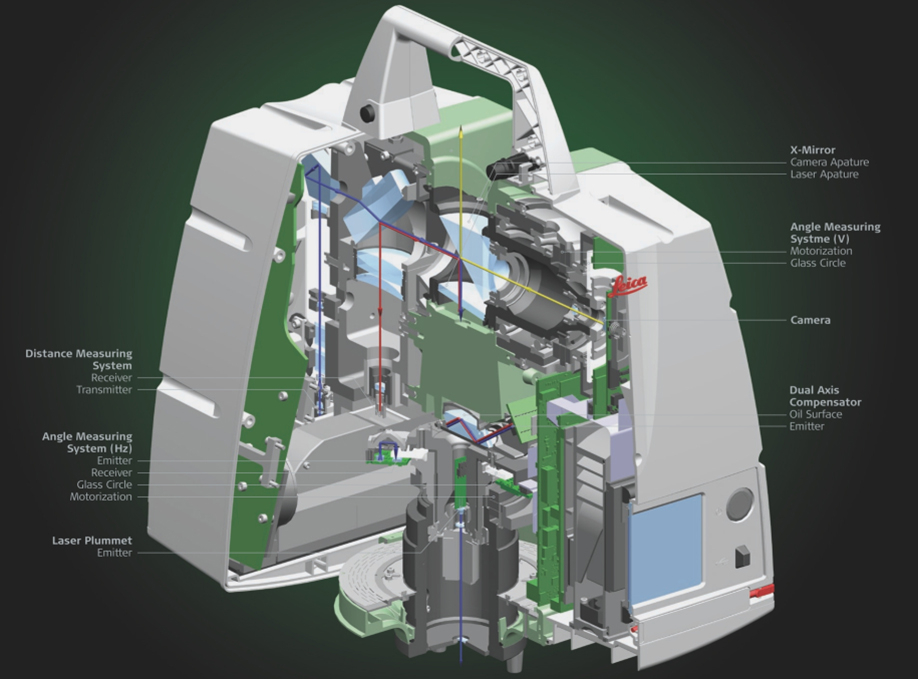 Automating profile measurement also removes the dependence on operators, eliminating the risk of human error or variation in measurement methods, thus improving reliability while reducing inspection time.
Automating profile measurement also removes the dependence on operators, eliminating the risk of human error or variation in measurement methods, thus improving reliability while reducing inspection time.
Contact-type measuring systems are difficult to use on the surfaces of scratch-sensitive products and electronic components mounted on delicate, precision PCBs. Laser profilers, on the other hand, can perform measurements of these delicate targets during production, without stopping the parts for inspection. Due to their non-contact measurement method, laser profilers can accurately measure the profiles of rubber products, food items, and other such soft objects without changing the shape of the target with pressure from contact. Laser profilers can provide a solution for automatic 100% inspections for a diverse range of industries, processes, and products.
Because 1D laser displacement sensors measure at one point rather than the whole surface, they are somewhat limited for calculating 2D or 3D measurements such as height difference or warpage.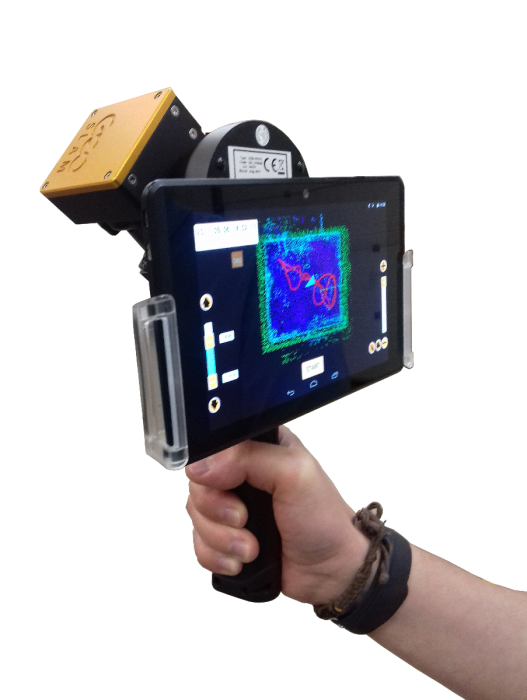 Laser profilers provide a solution for scanning wide areas in a single pass, making it possible to complete more complex measurements at high speeds.
Laser profilers provide a solution for scanning wide areas in a single pass, making it possible to complete more complex measurements at high speeds.
Completing 2D measurements, such as height difference, with 1D laser displacement sensors requires either the use of multiple sensors or the installation of a precision stage to adjust the sensor's position relative to the target. This could be difficult due to time or space constraints, and the accuracy is limited to how well the part can be positioned. However, laser profilers measure the height across a surface using a laser line instead of looking at a single point, making it possible to complete height difference measurements across wide areas without the need for motion or multiple sensors. By installing laser profilers into a production line, manufacturers can improve throughput by performing height difference, warpage, and other 2D/3D measurements without stopping the product.
Camera-based inspection can be difficult for certain applications due to lighting conditions, lack of color contrast, or height differences in the target. Additionally, the scope is limited to 2D measurements, so height inspection must be completed separately. Laser profilers can complete 3D inspection and defect detection of any material without external lighting.
Additionally, the scope is limited to 2D measurements, so height inspection must be completed separately. Laser profilers can complete 3D inspection and defect detection of any material without external lighting.
Conventional area cameras and line scan cameras need lighting fixtures to be installed. In some cases, it can be difficult to set conditions due to unevenness of color, patterns, gloss, and other characteristics the target may have. Furthermore, cameras cannot measure height, and even aiming from an angle does not enable reliable inspection due to the inability to fully focus an image from the front to the back of a target. On the other hand, laser profilers can measure heights without external lighting. With only a sensor head installed, a laser profiler can be used to inspect height and other 3D profile data by capturing the object's shape from above. Laser profilers can also achieve reliable inline profile measurements without being affected by color differences, patterns, and other characteristics of the target object.
Automotive
High-speed laser profilers can follow the applicator system (dispenser nozzle) to measure and inspect the 3D profile of sealants and freshly applied adhesives in real-time. As laser profilers are free from the impact of radiant light, they can be used for measuring just-welded beads by following the torch of the welding robot. Other applications include appearance inspections of parts and products as well as other 3D profile measurements that were previously impossible for automated inline inspections. KEYENCE introduces the next generation of automated 100% inspections that can only be achieved with laser profilers.
More Details
EV Parts
The batteries―one of the most important components of electric vehicles―must meet high quality and safety standards. A laser profiler can automatically perform 100% inspections in a broad range of processes, including coating application quality during the manufacturing of lithium-ion batteries and the 3D profile measurement of electrodes and weld beads for lid sealing of square cases. Click here to explore other examples of automatic appearance inspection of key parts related to motors and connectors.
Click here to explore other examples of automatic appearance inspection of key parts related to motors and connectors.
More Details
Electric and Electronic Parts
Inspection needs are growing with the increasing demand for smartphones, tablets, and wearable devices, along with the trend for smaller size and higher functionality. KEYENCE introduces examples of automatic 100% inspections using laser profilers in the electric and electronic parts industry, including profile measurement of PCB warpage and solder pastes applied on PCBs, oil seal and O ring insertion inspection for the casing, and coplanarity inspection of pins.
More Details
Semiconductors
Laser profilers are very effective for semiconductor processes where precision and stability are required, thanks to their ability to measure without negative impacts from part gloss or color variation. Wafer edge profile and positioning accuracy play a huge part in reducing loss and efficiently manufacturing quality chips. KEYENCE showcases examples of introducing laser profilers that offer reliably precise measurements and inspections of wafers with unique gloss for profile inspections of notch positions and edge shapes.
KEYENCE showcases examples of introducing laser profilers that offer reliably precise measurements and inspections of wafers with unique gloss for profile inspections of notch positions and edge shapes.
More Details
Height and Height Difference Measurement
A typical problem encountered in inspections is the occurrence of measurement errors due to the target object being tilted. KEYENCE introduces examples of height and height difference measurements using a laser profiler equipped with a tilt correction function for accurate measurement. How the laser profiler works are explained using a measurement example that involves both transparent and mirrored surfaces as well as a comparison with contact-type measuring systems.
More Details
Width Measurement
Laser profilers can provide inline measurement of a target's width in any position. KEYENCE introduces examples including a case using a laser profiler to measure the width of elastomers. Alternative solutions for non-contact width measurement are also explained.
Alternative solutions for non-contact width measurement are also explained.
More Details
Angle Measurement
Laser profilers can measure angles quickly and precisely without using multiple sensor heads or external calculations. KEYENCE introduces an example that improves the quality of automatic welding by instantly measuring the groove shape, position, and angle ahead of the torch of the automatic welding machine and providing feedback to the system.
More Details
Warpage and Flatness Measurement
A single laser profiler accurately measures the warpage and flatness of a target using the height data from under the laser line. Measurements and inspections are performed simply and speedily thanks to this laser profiler’s ability to detect and measure the height peak and bottom points and warpage width from the obtained profile data.
More Details
2D Profile Measurement
Laser profilers equipped with single-shot HDR can provide fast, high-precision measurement of the 2D profile of treads even while the tires (which have low color contrast) are in motion.
The 3D profile can also be measured by acquiring the profile data of the entire circumference of the rotating tire and subjecting it to image processing. This section provides such examples.
More Details
3D Profile Measurement
Laser profilers are capable of performing inline 3D inspections on any object. Reliable 100% inspections can be achieved without affecting cycle time by leveraging the high-speed sampling, high precision, and high-performance position adjustment functions of laser profilers. In this introduction, KEYENCE refers to 3D displacement sensors that can instantly batch-measure the height at multiple points, which supports a wide range of applications, including part defect inspection.
More Details
The LJ-V7000 Series and LJ-X8000 Series both support advanced 3D profile measurement and inspection, not to mention 2D profile inspection using inline profile measurement.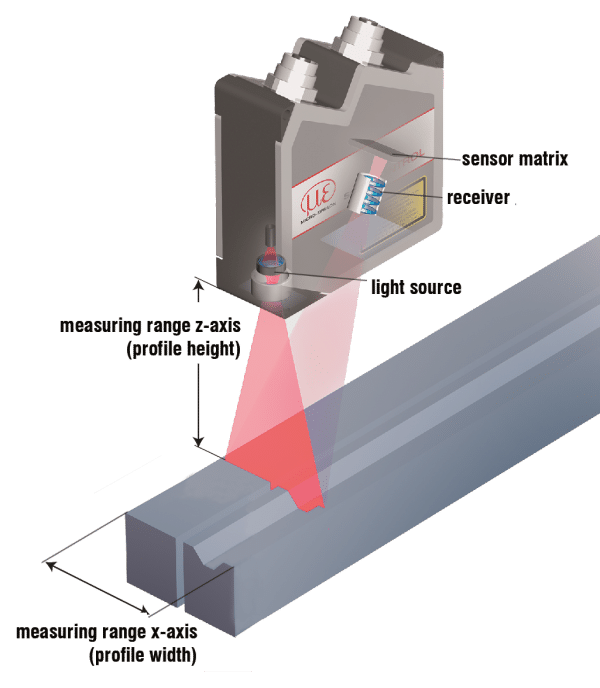
The LJ-X8000 Series achieves 3200 pixels along the X-axis per profile, enabling super-high-definition profile measurement in both the X and Z-axis. These laser profilers are capable of accurately capturing minute profile features. The LJ-V7000 Series provides high-speed sampling, up to 64 kHz, contributing to shorter cycle times by means of fast, precision inline measurement and inspection.
Both series adopt a blue laser, which offers stable measurement and inspection without being affected by the target’s material, color, or temperature conditions.
One head can measure up to a width of 720 mm (LJ-X8000 Series). Our laser profilers can automatically inspect the full width and the total length of sheets, films, and other wide objects with only one sensor head or multiple sensors paired together. Their simplicity makes them easy to integrate into existing systems, but they are super powerful inspection tools and can detect the smallest unevenness on the surface from one end to the other without stopping the roll-to-roll machine movement thanks to their high-speed sampling capability. Additionally, unlike conventional cameras, laser profilers do not require that the head position be readjusted even for sheets with different thickness or color, making them capable of responding to a variety of products easily and quickly.
Additionally, unlike conventional cameras, laser profilers do not require that the head position be readjusted even for sheets with different thickness or color, making them capable of responding to a variety of products easily and quickly.
Most definitely. KEYENCE not only offers a 3D image processing and inspection package, but also a dedicated profile output model (LJ-X8000A) that specializes in and is only designed for use with profile data output. Because raw profile data measured by a laser profiler can be directly imported into a computer, this data can be introduced into 3D inspections using an existing system and existing machine vision libraries without any extra costs. This model is bundled (free of charge) with a HALCON-compatible version of sampling software that supports various machine vision libraries.
Installation for 3d scanning of the object surface "SKIL"
SKIL - 3D scanning of the product surface profile
The SKIL scanner is designed for non-contact scanning of the product surface profile along the movement line (guide) and obtaining its 3D image.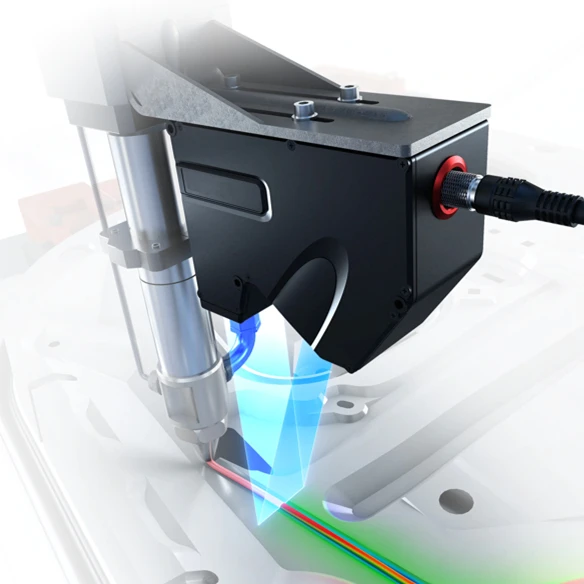 The system measures the product profile with high accuracy without mechanical contact with it. The SKIL scanner works simultaneously with one LS2D measuring device.
The system measures the product profile with high accuracy without mechanical contact with it. The SKIL scanner works simultaneously with one LS2D measuring device.
The system provides real-time graphical visualization of measurements and allows for correction of the inclination of the measurement surface to the sensor plane. Depending on the requirements of the customer, the system can perform additional digital processing of measurements, calculate the geometric characteristics of the product. nine0005
Measurements can be carried out sequentially for each sample of the product or continuously - when integrated on a conveyor belt.
The scanner is intended for use as a part of quality control lines of industrial enterprises for automatic sorting of products on a conveyor according to geometric characteristics (thickness, curvature, hole diameters, distance between holes, etc.) or detected local defects.
SKIL can be used for laboratory research of various samples, as well as for reverse engineering tasks.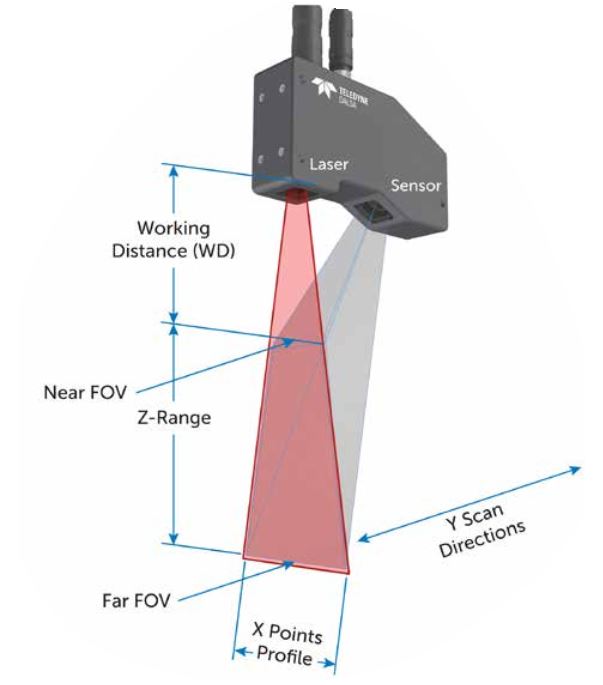 nine0009
nine0009
|
|
|
Characteristics of SKIL - 3D scanning of the product surface profile nine0061
| MEASURED OBJECTS | |
| Solids of revolution | abrasive wheels, shafts, discs, tires, bushings, cylinders |
| Other products | forgings, castings, flat products |
| MEASUREMENTS | |
| Geometric | thickness, width, length of product |
| Quantitative | number of pieces (conveyor) |
| Hole finder, detection of local defects | hole diameters, hole spacing, straightness, slot depth |
| MEASUREMENT CHARACTERISTICS | |
| Measurement area, mm | up to 2000×500×500 |
| Measuring speed, sections/s | 1000 |
| Relative error limit reduced to measurement range, % | 0.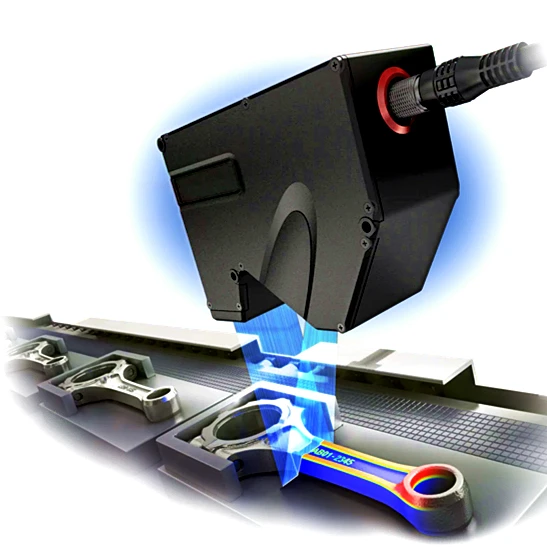 1 1 |
| Distance from the object to the beginning of the sensor measurement range, mm | 50 - 500 |
| OPERATING CONDITIONS | |
| Operating temperature range, °С | 0 … +60 |
| Supply voltage | 220V/50Hz |
| EQUIPMENT | |
| Laser sensor LS2D, pcs | 1 or 2 |
| Linear motion module, pcs | 1 |
| Rotary motion module | optional |
| Touch screen industrial computer | optional |
| Software | SKIL software |
Machine vision solutions based on 3D scanners / Machine vision / Machine vision for solving inspection problems in industry / Solutions
home › Solutions › machine vision › Quality control › Solutions based on 3D scanners
Machine vision solutions based on 3D scanners
Laser scanners are designed for non-contact measurement and control of the surface profile, position, movement, dimensions, recognition of technological objects, and construction of 3D models.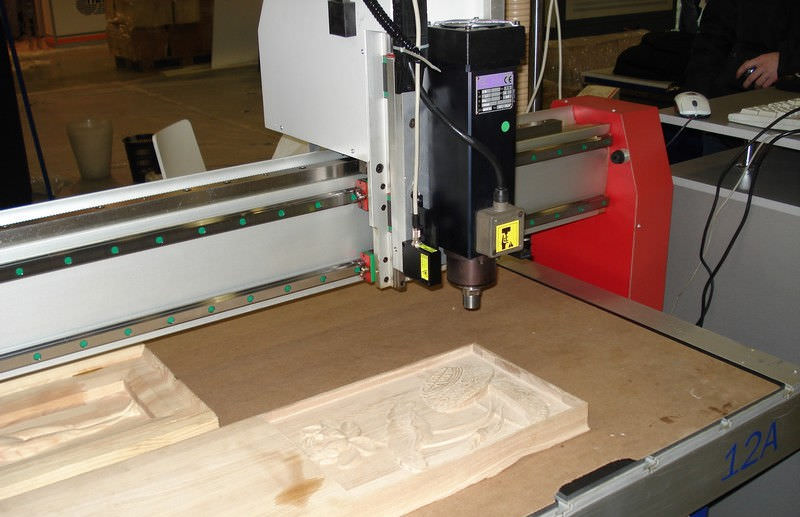 Factory-calibrated 3D sensors measure surface characteristics such as length, width, height, slope or volume in real-world units with micron precision.
Factory-calibrated 3D sensors measure surface characteristics such as length, width, height, slope or volume in real-world units with micron precision.
DOWNLOAD BROCHURE Calculate project
The 3D scanner is based on the principle of optical triangulation. nine0009
Semiconductor laser radiation is formed into a line and projected onto an object. The radiation scattered by the object is collected by the lens on a two-dimensional CMOS-matrix. The resulting image of the object contour is analyzed by the signal processor, which calculates the distance to the object (Z coordinate) for each of the many points along the laser line on the object (X coordinate). Scanners are characterized by the beginning of the working range (SMR) along the Z coordinate, the working range (MR) along the Z coordinate, the working range along the X coordinate at the beginning of the working range along Z (Xsmr) and at the end of the working range along Z (Xemr). nine0009
We have ready-made bases of algorithms for working with 3D scanners, which allow us to quickly solve a wide range of 3D vision problems.